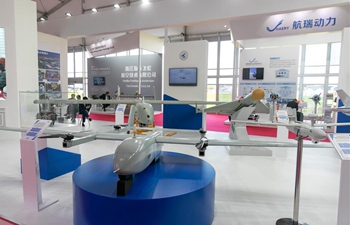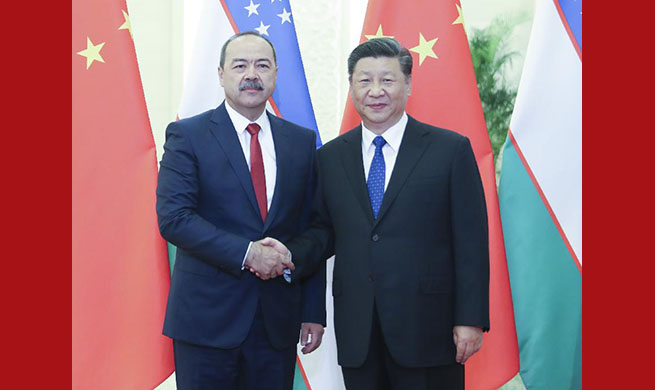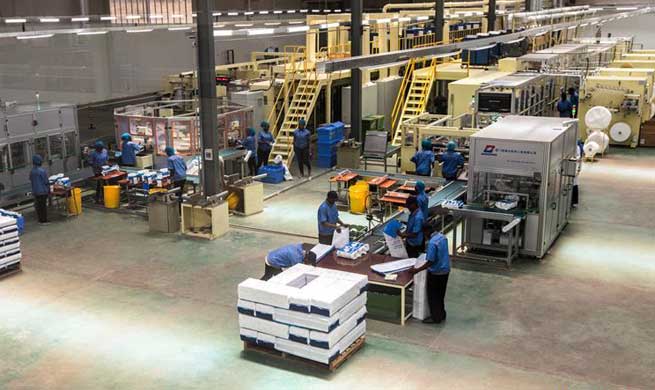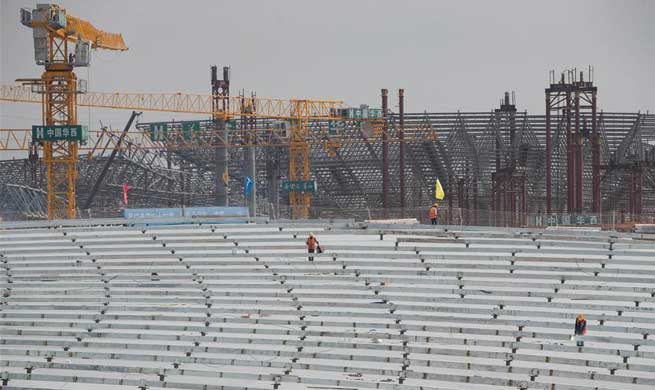SEOUL, Aug. 29 (Xinhua) -- South Korea on Thursday offered a record yearly budget for next year to boost economic growth and tackle the effect from trade spat with Japan.
The country's Ministry of Economy and Finance said the 2020 budget was set at 513.5 trillion won (422 billion U.S. dollars), up 9.3 percent from this year's budget and the biggest-ever fiscal spending.
This year's budget of 469.6 trillion won (386 billion U.S. dollars) was up 9.7 percent from the previous year.
The budget plan was scheduled to be submitted next week to the National Assembly for approval, of which deadline is Dec. 2.
Next year's expansionary budget plan came amid the global trade dispute, which worsened the world trade and hit hard the export-driven South Korean economy. The country's export kept sliding for eight straight months to July.
Adding to the uncertainty, Japan tightened regulations last month over its export to South Korea of three materials vital to produce memory chips and display panels, the mainstay of the South Korean export.
Early this month, Japan dropped South Korea off its whitelist of trusted trading partners, which are given preferential export procedure. In response, Seoul also removed Tokyo from its whitelist of trusted export partners.
"For heavily export-dependent (South) Korea to cushion these external shocks, we need to urgently spur innovative growth and transform our fundamentals into those of a pace-setting economy. To this end, fiscal spending should play an aggressive and proactive role," South Korean President Moon Jae-in said in a Cabinet meeting to decide on the 2020 fiscal budget.
Minister of Economy and Finance Hong Nam-ki, who doubles as deputy prime minister for economic affairs, told a press briefing that next year's budget would be much more expansionary than this year as getting back the economy into a growth track with the active fiscal spending is of much help over the long run.
The active fiscal spending would lead the government to record a fiscal deficit next year given the ministry's outlook for next year's tax revenue set at 482 trillion won (396 billion U.S. dollars). The finance ministry planned to sell state bonds to cover the fiscal shortfall.
Hong said it would not be easy for the economy to meet the government's growth target range of 2.4-2.5 percent this year, which was revised down from the previous forecast to 2.6-2.7 percent.
The Bank of Korea (BOK) cut its benchmark interest rate by 25 basis points to 1.50 percent last month, downgrading its growth forecast for this year from 2.5 percent to 2.2 percent.
The country's real gross domestic product (GDP), adjusted for inflation, expanded 1.1 percent in the second quarter on a quarterly basis, after surprisingly skidding 0.4 percent in the first quarter.
The first-quarter GDP fall was attributed to lower chip price, caused by the downturn in business cycle of the global semiconductor industry. Japan's export curbs added uncertainty to the chip industry.
To deal with the trade dispute with Japan, the government earmarked 24.1 trillion won (19.8 billion U.S. dollars) for next year's research and development (R&D) budget, up 17.3 percent from this year.
It would be mainly spent on the development of homegrown industrial parts and materials to reduce South Korea's dependence on Japan, and the investment in new growth engines such as artificial intelligence (AI), fifth-generation (5G) networks, system chip, bio-health and future cars.
Meanwhile, the government allotted 50.2 trillion won (41.3 billion U.S. dollars) for defense budget next year, topping 50 trillion won for the first time and up 7.4 percent from this year's military spending.
Of the total, 16.7 trillion won (13.7 billion U.S. dollars) would be spent on building up arms and improving defense capabilities, including the introduction of 40 F-36A stealth fighter jets from the United States by 2021. South Korea has received six of the fighters until now.
It was up 8.6 percent from this year's budget for arms buildup. The remaining budget would be used to run military forces.













